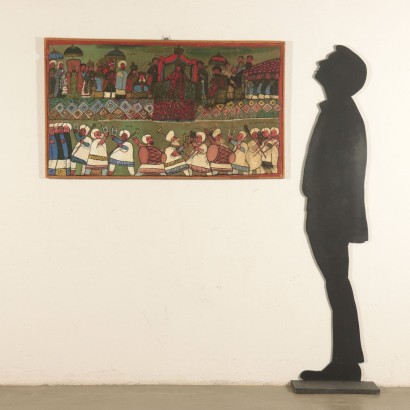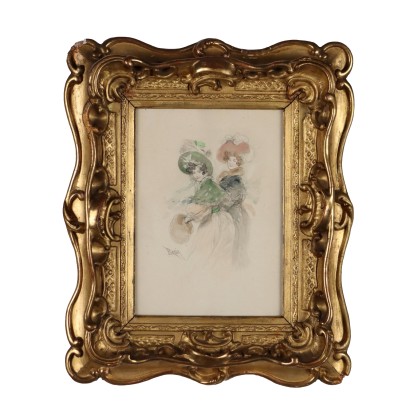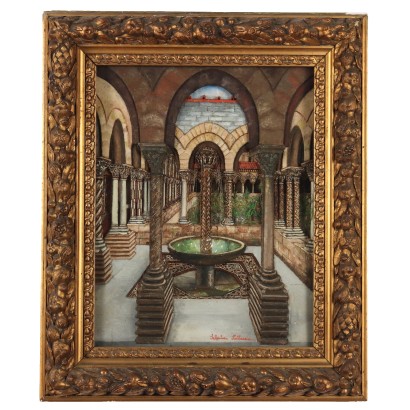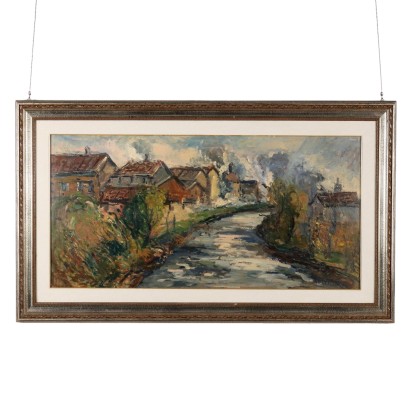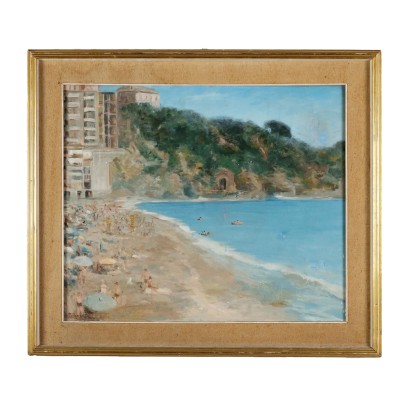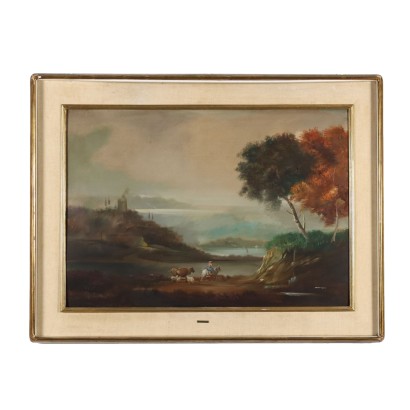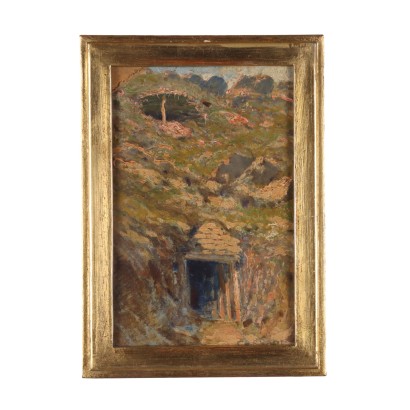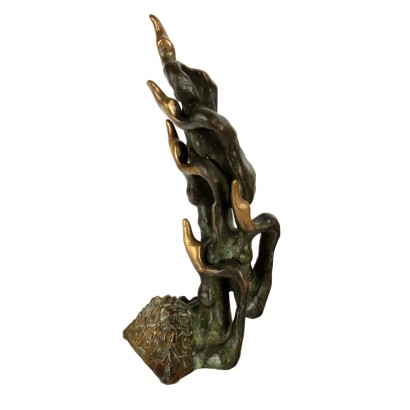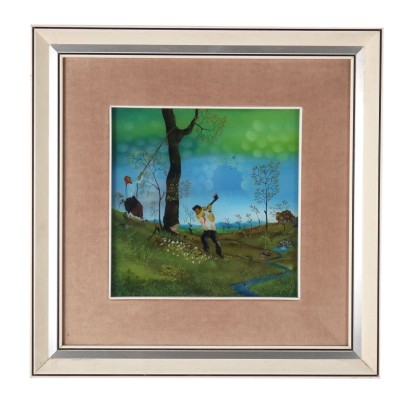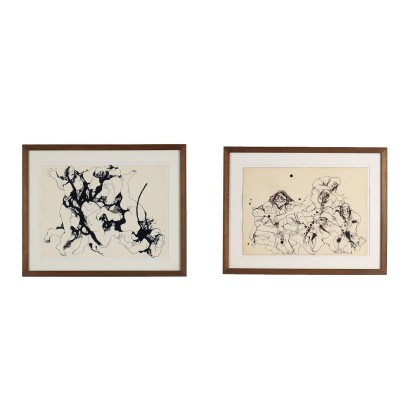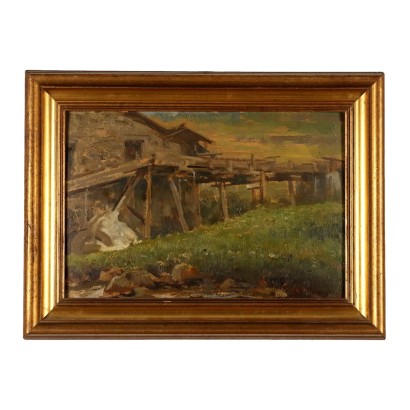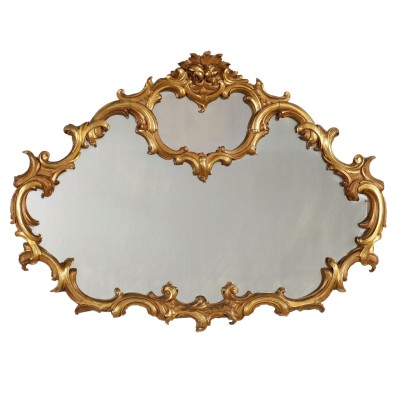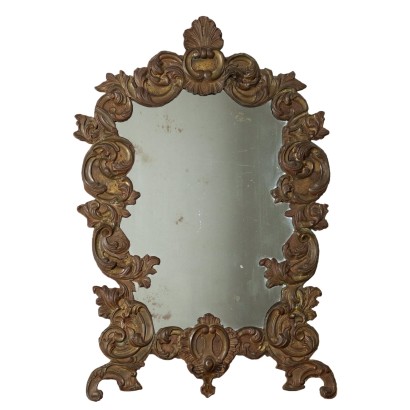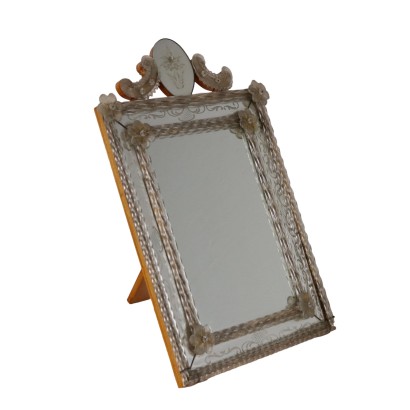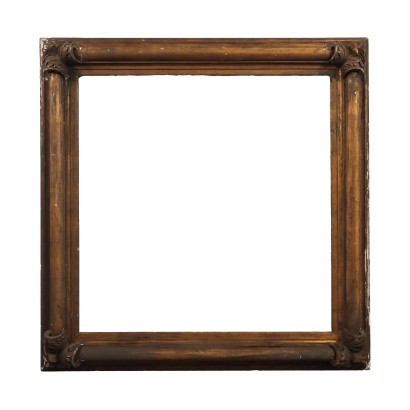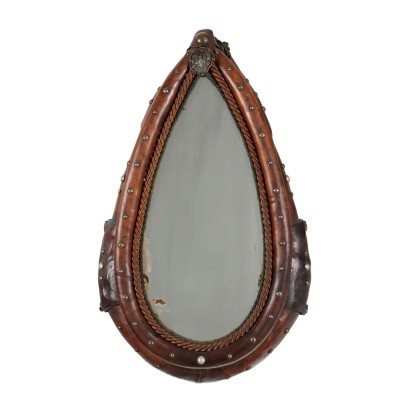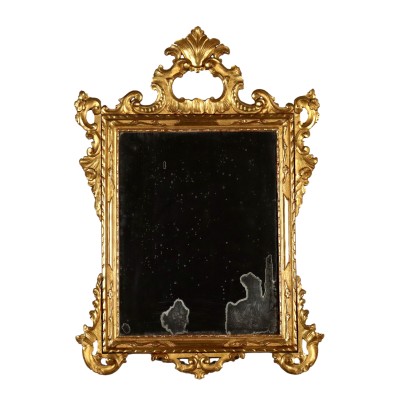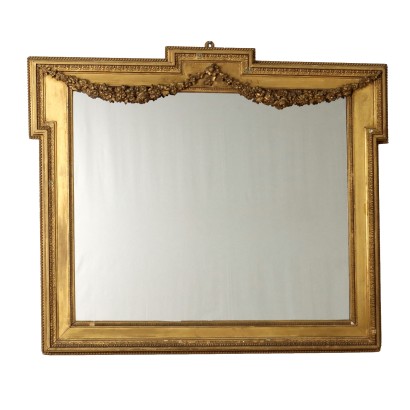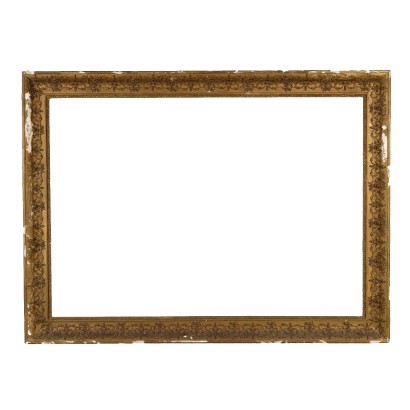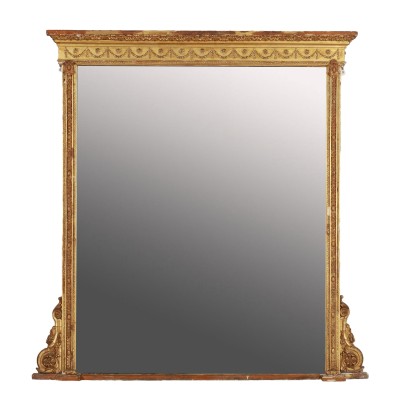Religious Subjct Oil on Canvas Italy 1935 Ca. - Ethiopian art, c. 1935
Features
Ethiopian art, c. 1935
Artwork title: La regina di Saba incontra re Salomone
Age: 20th Century / 1901 - 2000
Subject: Sacred Subject
Origin: Ethiopia
Artistic technique: Painting
Technical specification: Oil on Canvas
Description : La regina di Saba incontra re Salomone
The canvas depicts the meeting between the queen of Sheba and king Solomon. The queen is represented seated on a throne, in the center of the scene, and to the left appears the following, which brings rich gifts to the king. Solomon is sitting on his throne, characterised by the image of the lion on the side, behind him entered his court. In the underlying part, the musicians emphasize the character of the feast of the meeting. It is part of a group of seven works, which arrived in Italy at the end of the '30s; were purchased directly on-site , as we have reconstructed from the correspondence and from the family photos, from the lawyer xxx, grandfather of the owners, who was sent as a legal representative of a company of Italian production in 1935 in Ethiopia, and from here it was driven out in 1938 by general Graziani, because it was considered anti-fascist. The paintings remained in the family collection, in the palace of the family, and are now presented in all their expressive force. Ethiopia has a very particular history: it is situated between Africa and Asia, and between the Mediterranean and the Indian Ocean, was a crossroads and meeting point of different cultures, stimulated also by the constant and intense trade flows. Five centuries before Christ, stabilized the dynasty of Aksum; in this kingdom, in the fourth century after Christ, christianity was established as state religion, in his version, the coptic orthodox. The sacred texts of the medieval speak also, however, a direct relationship with one of the ten Hebrew tribes, after fleeing to Ethiopia, from which sprang the royal family through the queen of Sheba. And in fact, in Ethiopia still live today), the line of the Falascià, black jews, whose first historical mention dates back to 600 after Christ. Ethiopia was then a bastion of jewish-christian, with african influences, but to be considered almost the southern edge of the mediterranean culture.
Product Condition:
Product in good condition, has small signs of usage.
Frame Size (cm):
Height: 71
Width: 123
Depth: 3
Artwork dimensions (cm):
Height: 69
Width: 121
Depth: 3
Additional Information
Age: 20th Century / 1901 - 2000
20th Century / 1901 - 2000Subject: Sacred Subject
Artistic technique: Painting
La pittura è l'arte che consiste nell'applicare dei pigmenti a un supporto come la carta, la tela, la seta, la ceramica, il legno, il vetro o un muro. Essendo i pigmenti essenzialmente solidi, è necessario utilizzare un legante, che li porti a uno stadio liquido, più fluido o più denso, e un collante, che permetta l'adesione duratura al supporto. Chi dipinge è detto pittore o pittrice. Il risultato è un'immagine che, a seconda delle intenzioni dell'autore, esprime la sua percezione del mondo o una libera associazione di forme o un qualsiasi altro significato, a seconda della sua creatività, del suo gusto estetico e di quello della società di cui fa parte.Technical specification: Oil on Canvas
The oil painting is a painting technique using powder pigments mixed with bases in inert and oils.Other customers have searched:
Se sei un appassionato d'arte, non perderti i nostri approfondimenti sul Blog Arte Di Mano in Mano e su FineArt by Di Mano in Mano - Arte:
Ecco alcuni tra i principali articoli:
Vedute
Falsi nell'arte antica
Un messaggio di fiducia per ripartire
La potenza espressiva dell'arte figurativa etiope
Breve Storia del Collezionismo
Giorgio Upiglio, maestro dei libri d'artista
Matthias Withoos detto "Calzetta bianca"
San Rocco pensaci tu - Classic Monday
Ecco alcuni esempi dell'arte del Novecento più bella che puoi trovare da noi:
I Raccoglitori di patate - Lavoro estivo - Augusto Colombo, 1935
I Taglialegna - Lavoro invernale - Augusto Colombo, 1933
Il lavoro femminile, Contardo Barbieri, 1954 ca.
Sapevi che l'arte può essere anche un ottimo investimento (e non solo per grandi portafogli)?
L'Arte tra Collezionismo e Investimento
FineArt: Arte come investimento
Dai un'occhiata alle nostre rubriche di divulgazione sull'arte:
Epoche
Lavorazioni e tecniche
Mostre ed Eventi
Protagonisti


